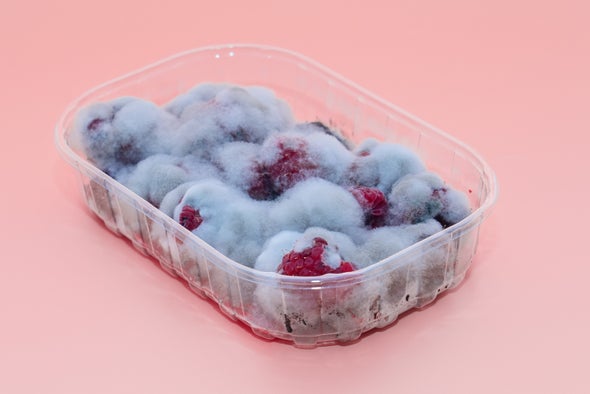(单词翻译:单击)
听力文本
This is Scientific American's 60-second Science, I'm Christopher Intagliata.
The Food and Drug Administration has to recall hundreds of foods every year. Like cookie snack packs with chunks of blue plastic hiding inside, Salmonella-tainted taco seasoning or curry powder laced with lead.
It can take months before a recall is issued. But now researchers have come up with a method that might fast-track that process, leading to early detection and, ultimately, faster recalls.
The system relies on the fact that people increasingly buy foods and spices online. And people tend to write reviews of products they buy online—which are like bread crumbs to food-safety officials sniffing out dangerous products.
The researchers linked FDA food recalls from 2012 to 2014 to Amazon reviews of those same products. They then trained machine-learning algorithms to differentiate between reviews for recalled items and reviews for items that had not been flagged.

And the trained algorithms were able to predict FDA recalls three quarters of the time. They also identified another 20,000 reviews for possibly unsafe foods—most of which had never been recalled. The results are in Journal of the American Medical Informatics Association.
The World Health Organization estimates that 600 million people worldwide get sick annually from contaminated food, and more than 400,000 people die from it. "So having tools that enable us to detect this a lot faster and hopefully investigate and do recalls faster will be useful not just in the U.S. but in other countries around the world as well." Study author Elaine Nsoesie of Boston University.
She did add one caveat: even recalled products can still get five-star reviews. So stars alone don’t tell the whole sickening story. The proof, unfortunately, may still be in the pudding.
Thanks for listening for Scientific American — 60-Second Science. I'm Christopher Intagliata.
参考译文
这里是科学美国人——60秒科学系列,我是克里斯托弗·因塔格里塔。
美国食品药品监督管理局(简称FDA)每年都要召回数百种食品。比如藏有大块蓝色塑料的饼干零食包、受沙门氏菌污染的墨西哥卷饼调料或含铅咖喱粉。
从发现问题到宣布召回可能会耗时数个月之久。但现在研究人员想出了一种方法,可以快速开展这一过程,从而实现早期检测,最终加快召回速度。
该系统依靠的是人们越来越多地在网上购买食物和调料这一事实。人们倾向于为网购产品写评论——这对发现危险产品的食品安全官员来说,就像面包屑一样。
研究人员将2012年至2014年FDA召回的食品,与亚马逊网站上对应产品的评论联系起来。之后,他们训练机器学习算法,区分被召回产品的评论和未被标记产品的评论。
经过训练的算法预测FDA召回产品的准确率能达到75%。他们还识别了另外2万条可能不安全食品的评论,而这些食品从未被召回过。研究结果发表在《美国医学信息学协会期刊》上。
世界卫生组织估计,全球每年有6亿人因受污染食品患病,超过40万人因此而死亡。“所以,拥有能让我们更快发现问题并有望加速调查和召回的工具,不仅对美国有利,对世界其他国家同样有利。”该研究的作者、波士顿大学的伊莲·恩索西说到。
她提出了一个警告:即使是被召回产品也依然能获得五星好评。因此,仅凭星评无法讲述整个令人患病的故事。不幸的是,食物好不好,只有吃过才知道。
谢谢大家收听科学美国人——60秒科学。我是克里斯托弗·因塔利亚塔。
译文为可可英语翻译,未经授权请勿转载!
重点讲解
重点讲解:
1. come up with 想出,提出(计划、想法等);
Howard Wilkinson has come up with an absolute corker of an idea.
霍华德·威尔金森想出了一个绝佳的主意。
2. rely on 依赖;依靠;
We had to rely on a compass and a lot of luck to get here.
我们不得不依靠指南针和不错的运气找到这儿来。
3. tend to do sth. 往往;倾向于;
They will tend to model their behaviour on the teacher's behaviour.
他们会倾向于模仿老师的行为举止。
4. sniff out 发现;找到;
Journalists are good at sniffing out a scandal.
记者善于发现丑闻。


